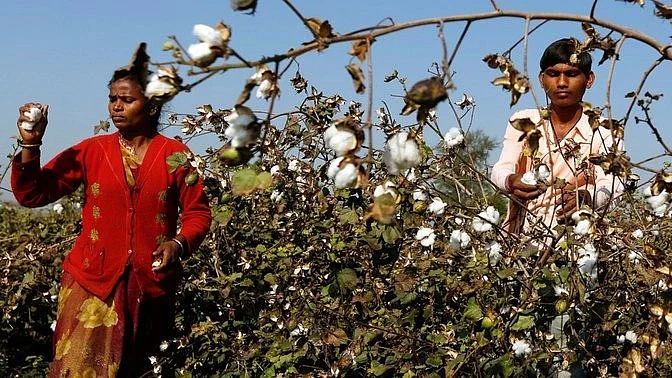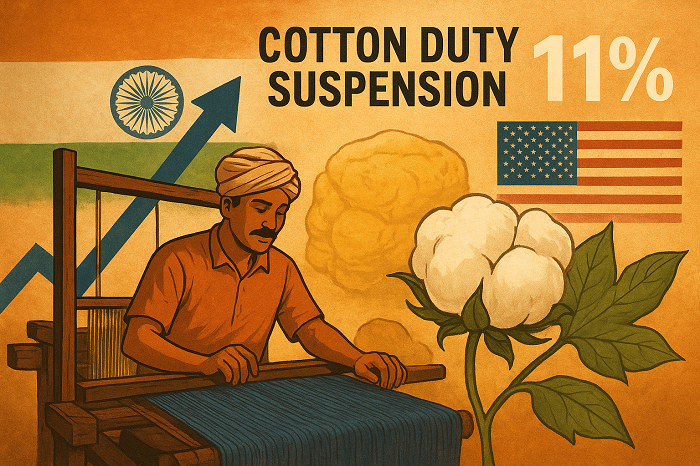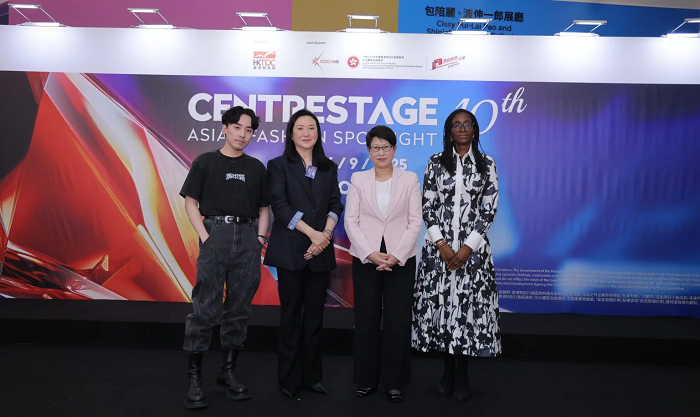Pakistan’s knitwear exports have gone up by 21 per cent year on year. Bedwear exports have risen by seven per cent. Readymade garment exports have risen by nine per cent.
These three segments outperformed all other products of the textile sector.
Textile exports have risen by seven per cent year on year. This growth was primarily led by the value added segment, which rose 12 per cent year on year.
The expansion in value added segment exports is because of the appreciation of the euro by nine per cent and improved competitiveness post implementation of the textile package.
On the other hand, cotton yarn exports fell by 11 per cent year on year driven by a 13 per cent year on year volumetric downturn. One possible reason is soaring raw material costs for the spinning segment as domestic cotton prices have shot up following a lower than targeted domestic crop.
On a cumulative basis, textile exports were up eight per cent year on year, primarily driven by a 11 per cent year on year hike in the value added segment. Basic textile exports followed with a meager one per cent year on year increment.
Pakistan is the fourth largest cotton producing country in the world.
With GST Bangladesh has started making inroads into India's readymade garment market.
This tax has given Bangladeshi garment manufacturers a ten to 15 per cent cost advantage over production in India. The over-arching tax was implemented in India from July 1. Imports of garments from Bangladesh jumped 56 per cent from then to November over the corresponding period last year. Of this, imports of knitted apparel surged 69 per cent. Knitwear from Bangladesh is popular in India because of low prices and good quality.
Bangladesh procures fabrics from China duty-free while Indian garment makers have to pay 20 per cent import duty for the same fabrics from China. Their power and personnel costs are also higher. Bangladesh’s two other basic advantages over Indian manufacturers are cheaper electricity and cheaper labor.
In the pre-GST regime, garment manufacturers in India were protected through the levy of a countervailing duty on imports, equivalent to the excise duty on domestically manufactured garments, in addition to education cess. This protection has gone away after GST implementation.
Garment exports from Bangladesh to India rose 30.86 per cent year-on-year in fiscal 2015-16. Foreign retailers buy a lot of garment items from Bangladesh for Indian customers, especially for the rising middle class.
Many brands have links to a scheme that allows Egyptian manufacturers to export garments to the US tax-free so long as Israeli materials are used.
The program, known as Qualifying Industrial Zones (QIZ), was enacted by the US in 1996 in an effort to normalise relations between Israel, Egypt and Jordan through economic cooperation.
Through QIZs, Israeli manufacturers supply at least 10.5 per cent of the products used in a garment. Then Egyptian factory workers sew the final product which is exported to the US and exempted from taxes of between five per cent and 40 per cent, but typically at a 15 per cent average.
When a consumer buys garments from brands that include Gap, Levi’s and Ralph Lauren, there is no mention of the Israeli component on clothes’ labels. They only say Made in Egypt.
Since its launch in Egypt, the program has more than doubled garment exports to the US.
Products enter the US as Egyptian, but if a product is 100 per cent Egyptian, so not part of QIZ, it is not exempt from tax.
However QIZ is hated in Egypt for linking Egypt to the Israelis.
Egypt is highly attractive as a sourcing hub for garment and textile companies as a result of its low wages and duty-free access to the US market, the largest clothes buyer on the planet.
In 2018, more than half of the revenues for the global fashion industry will come from new markets in the east than long established markets in Western Europe and North America.
Emerging markets in Asia (India, Vietnam, China etc.) will achieve revenue growth of 6.5 per cent to 7.5 per cent in 2018 with their European counterparts (Romania, Russia, Turkey etc.) slightly behind at between 5.5 per cent and 6.5 per cent. By way of contrast, mature markets in North America and Europe will grow only one per cent to three per cent.
Average revenues for the global fashion industry are expected to rise between 3.5 per cent and 4.5 per cent in the coming year. That is more than the 2.5 per cent to 3.5 per cent growth projected for 2017 and more than triples the growth in 2016 but still below the long-term average of 5.5 per cent. The industry’s profit margin (before taxes) is projected to hold steady at ten per cent.
New technologies, new consumers and an unpredictable macroeconomic environment continue to challenge leaders to rapidly shift their strategies and operating models.
Value creation at companies in this rapidly shifting market varies dramatically. The top 20 per cent of fashion providers earn a total 144 per cent of the industry’s value increase.
China needs an annualized growth of 6.3 per cent in 2018-2020 to realize the target of doubling Gross Domestic Product (GDP) by 2020. GDP expanded 6.9 per cent year on year in the first three quarters of 2017, above the target of around 6.5 per cent for the whole year.
Five years ago, China decided to double GDP and per capita income by 2020 as an important component of becoming a moderately prosperous society in all respects.
Judging from current economic performance, no huge barriers in meeting the goal are expected.
However China's emphasis is on development quality rather than fast expansion. High quality development is the fundamental requirement for determining the development path, making economic policies and conducting macroeconomic regulation.
Realizing high quality development is a must for sustaining healthy economic development and adapting to the country's new principal contradiction between unbalanced and inadequate development and the people's ever growing needs for a better life.
The potential growth rate has changed due to upgraded consumption, financial risk and environmental constraints.
The country is building and improving mechanisms for pushing forward high quality development, including indicators, policies, standards, statistical and performance assessment systems.
China’s economy held steady in the first eleven months of 2017.
China’s economy held steady in the first eleven months of 2017. Fixed asset investment (FAI) climbed 7.2 per cent for the January-November period, down from 7.3 per cent in the first ten months.
Investment in property development rose 7.5 per cent from a year earlier, edging down from 7.8 per cent in the first ten months.
Infrastructure investment, which accounts for more than 20 per cent of the total FAI, surged 20.1 per cent for the January-November period year on year, the pace of growth accelerating from 19.6 per cent for January-October.
Online shopping promotion, retail sales grew 10.2 per cent in November, up from ten per cent the previous month. Sales at Alibaba, China’s largest e-commerce platform, hit a record high on November 11.
Consumption will stay robust on the back of higher incomes and is expected to stay a pillar for economic growth next year.
The country’s GDP grew 6.9 per cent in the first nine months, above the target of around 6.5 per cent for the year. GDP growth is expected to be 6.8 per cent this year.
The steady economic growth will give policy makers more leeway to control risks, reduce poverty and tackle pollution.
More of the impact from the ongoing clean air campaign will come in December and the first quarter of 2018.
In the first eleven months of 2017, Bangladesh’s garment exports were up 1.38 per cent year-on-year. One reason is the favorable exchange rate. Exporters want further devaluation of the local currency against the dollar to compensate for the rising cost of production such that exporters can continue to be competitive on the global stage. They expect at least a ten per cent devaluation of the currency as they have faced a low exchange rate over the last five years. They say the exchange rate is still not up to the mark when compared with competing countries like India and Turkey.
Apart from the favorable exchange rate, the rising shipment of value added items, a brighter image of Bangladesh’s garment sector after remediation work, the relative political calm and automation of production also helped prop up garment exports in 2017. The absence of any major untoward incident like labor or political unrest was a boon for apparel exporters.
Garment exporters are cautiously optimistic about the new year as the country’s apparel sector is on a strong footing. Export receipts are expected to be about ten per cent higher next year. A good number of new factories will come into operation next year.
"Dawn of fast fashion and the convenience of buying trendy clothes at an affordable cost be it offline or online have truly been the trends for some time now. While on one hand, conventional mall retailers have been getting tough competition from the global giants such as Zara, H&M, Mango, on the other hand, the high-end fashion brands are also not exempt from sharing high-meets-low wardrobe-wielding consumers with these mass market giants. Let’s check out some of the trends worth mentioning…"

Dawn of fast fashion and the convenience of buying trendy clothes at an affordable cost be it offline or online have truly been the trends for some time now. While on one hand, conventional mall retailers have been getting tough competition from the global giants such as Zara, H&M, Mango, on the other hand, the high-end fashion brands are also not exempt from sharing high-meets-low wardrobe-wielding consumers with these mass market giants. Let’s check out some of the trends worth mentioning…

Down side of fast fashion In garment factories, women have to choose an option between safety and employment as it lacks well- established legal protections and standards that weigh in favour of fairness and transparency. The existence of such informal labour sectors, coupled with the gender-specific susceptibilities that garment factory owners and operators prey upon, make it quite a challenging affair for women employees. For instance, female workers in Cambodia have suffered mass fainting due to excessive hours worked in stifling conditions in factories that supply garments and accessories to sportswear brands including Nike, Puma, VF Corporation, and Asics.
In another turn of events, H&M has been accused of destroying 60 tons of recyclable garments. Kara/Noveren, a waste disposal company in Denmark, has incinerated over 60 tons of new, unworn apparel from H&M since 2013. These hundreds of thousands of garments consist of reusable/recyclable materials. Challenging the working conditions of fast fashion companies, analysts feel by failing to respond swiftly to factory workers who haven’t been compensated, Zara is doing serious damage to its brand. Fast fashion retailers these days are imitating the global runway showcases and mass producing them quickly to gain consumers. Additionally, most fashion brands – in attempts to offer affordable prices – look abroad for cotton, and the conditions in many of the far-flung locations where cotton is harvested are anything but pretty. Even after widespread campaigns done by NGOs to educate consumers about the harms associated with the practice of fast fashion, both in terms of sustainability and human rights, the intense demand for trendy, cheap clothing is not fading.
In Bangladesh the Awami League (one of the two major political parties of Bangladesh), along with garment industry employers, intensified their crackdown on apparel workers following mass walkouts over wages and working conditions in December.
Fast fashion is here to stay
A product of its times, fast fashion taps into its millennial core audience’s two favourite things: frequent novelty and affordability, which will outweigh traditional model of mass market retailing for some more years. After having gained traction and sustained long-term consumers, it’s going to be challenging for such brands to offer them the value in the price they desire. It remains to be seen if it’s going to be consumers at the helm or fast fashion brands would yet again make way for their increased price-points fashion trends.
A year which started with a crackdown on labour rights in Bangladesh also saw action taken around the world to fight for workers’ rights in a sustainable garment industry.
2017 in Bangladesh export industry resulted in 35 union leaders jailed, union offices shut down, and over 1,000 workers illegally terminated for raising their collective voices for higher wages and better working conditions. On the other side of the world in Nicaragua, workers were terminated and jailed for striking.
However garment unions from across the globe took action. From New York to Tokyo to Amsterdam, solidarity support for these struggles came in the form of letters to governments and global brands, protests and petitions.
IndustriALL North American affiliate workers united, originally founded by immigrant garment workers who came to the United States and Canada seeking a better life for themselves and their families only to face exploitation and poverty at their jobs, holds an annual summer education seminar for all newly elected worker representatives.
IndustriALL held a session on the global textile, garment, leather and shoe sector on the importance of global solidarity and how Workers’ United’s history is intertwined with the textile and garment global supply chain. Workers United members formed unions that improved their lives and helped bring social reform to their countries, improving life for millions.
According to a report on the prevalence of gender-based violence in the garment supply chain three quarters of women garment workers in Bangladesh stated to have experienced verbal abuse while 20 percent physical abuse.
The report further states that the sexual harassment and abuse, both physical and emotional, that women workers experience every day is endemic. This was revealed during a keynote speech by Runa Laila, at a roundtable on “Social dialogue, gender-based violence and living wage in RMG (present situation and practical solution)”.
Supervisors and line chiefs used bad language if production target remained unmet and masks and ID cards were used only when foreign buyers came to visit.
Towhidur Rahman, secretary general of IndustriALL Bangladesh Council, gave another speech on the necessity of living wages and prospects and Koen Oosterom, country manager, Fair Wear Foundation, the welcome speech.
There were presentations by representatives of partners Bangladesh National Women Lawyers Association, Karmojibi Nari and Awaj Foundation with Shirin Akhter MP as the chief guest at the open discussion.
- 1
- 2
- 3
- 4
- 5
- 6
- 7
- 8
- 9
- 10
Cotton at a Crossroads: Geopolitics, trade shifts, and the global balancing act
The global cotton market in 2025 is passing through a period of shifting trade relationships, geopolitical tensions, and the rising... Read more
German textile and fashion industry grapples with persistent economic headwinds
The German textile and fashion industry continues to pass through a challenging economic situation. An anticipated recovery remains elusive amidst... Read more
French consumers blinded by fast fashion's allure: Study
A recent study on French consumer habits in the fashion industry throws up a concerning picture, suggesting that the allure... Read more
The great retail shift in the US, private labels emerge as new brand leaders
Once a humble alternative for budget-conscious shoppers, private labels often called store brands have stealthily evolved into a commanding force... Read more
Indian textile sector braces for increased Chinese imports amid diplomatic thaw
Following high-level diplomatic engagements between Indian External Affairs Minister S. Jaishankar and Chinese Foreign Minister Wang Yi, a new chapter... Read more
The stretch revolution, spandex redefining fabric weight and cost
The addition of spandex yarn in the textile industry has changed the sector in many ways. While traditional metrics like... Read more
Weaving Relief: India's cotton duty suspension a lifeline for textile industry a…
In a move that has sent a wave of optimism through its embattled textile sector, the Indian government has temporarily... Read more
From Paris to Panipat: Can India help solve Europe’s textile recycling crisis?
In the quiet warehouses of northern France, bales of discarded jeans, shirts, and dresses pile higher each week. For French... Read more
Centrestage celebrates a decade of global fashion in Hong Kong
The Hong Kong Trade Development Council (HKTDC) will host the 10th edition Asia’s premier fashion gala – Centrestage in partnership... Read more
India, China, and Brazil to lead global cotton market in 2025-26, says ICAC proj…
As per the August 2025 ‘Cotton This Month’ report by the International Cotton Advisory Committee (ICAC), global cotton production is... Read more












